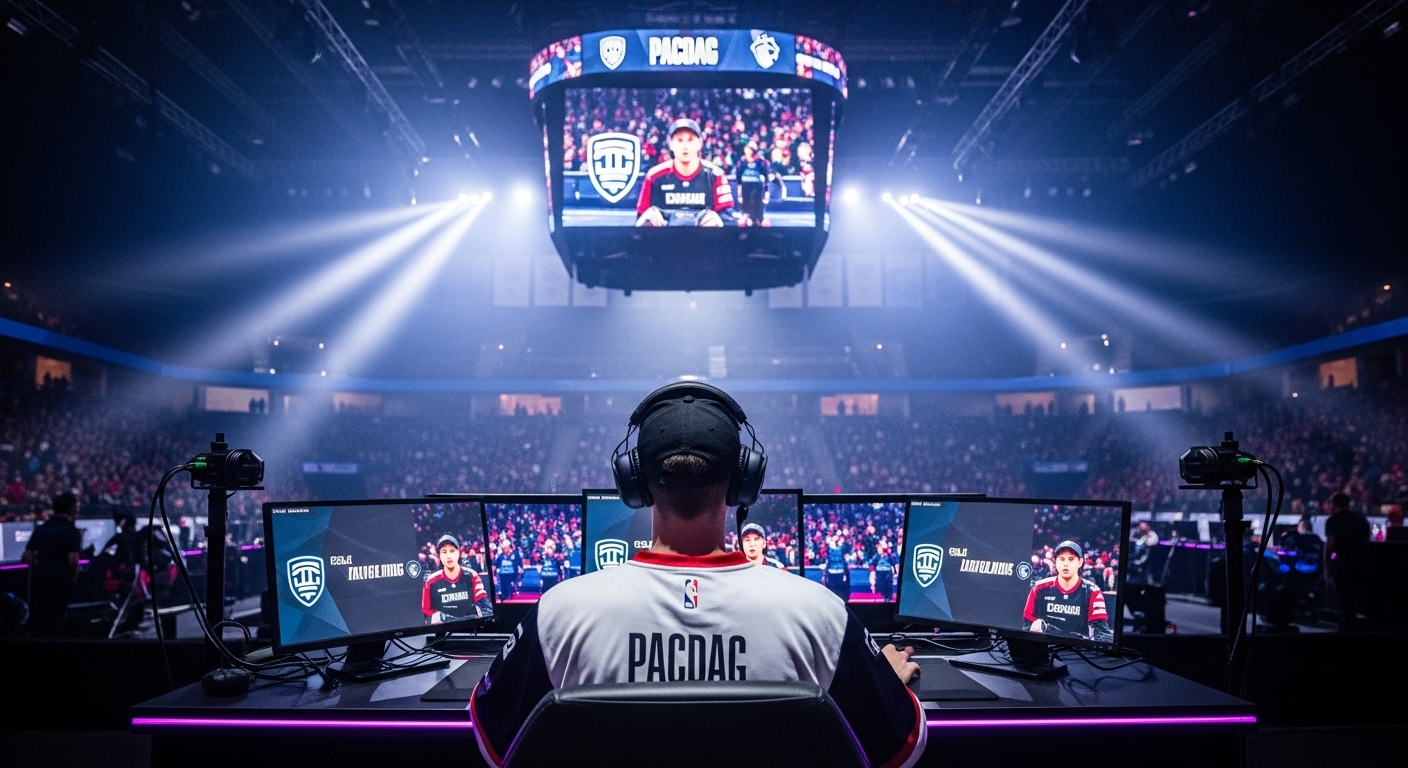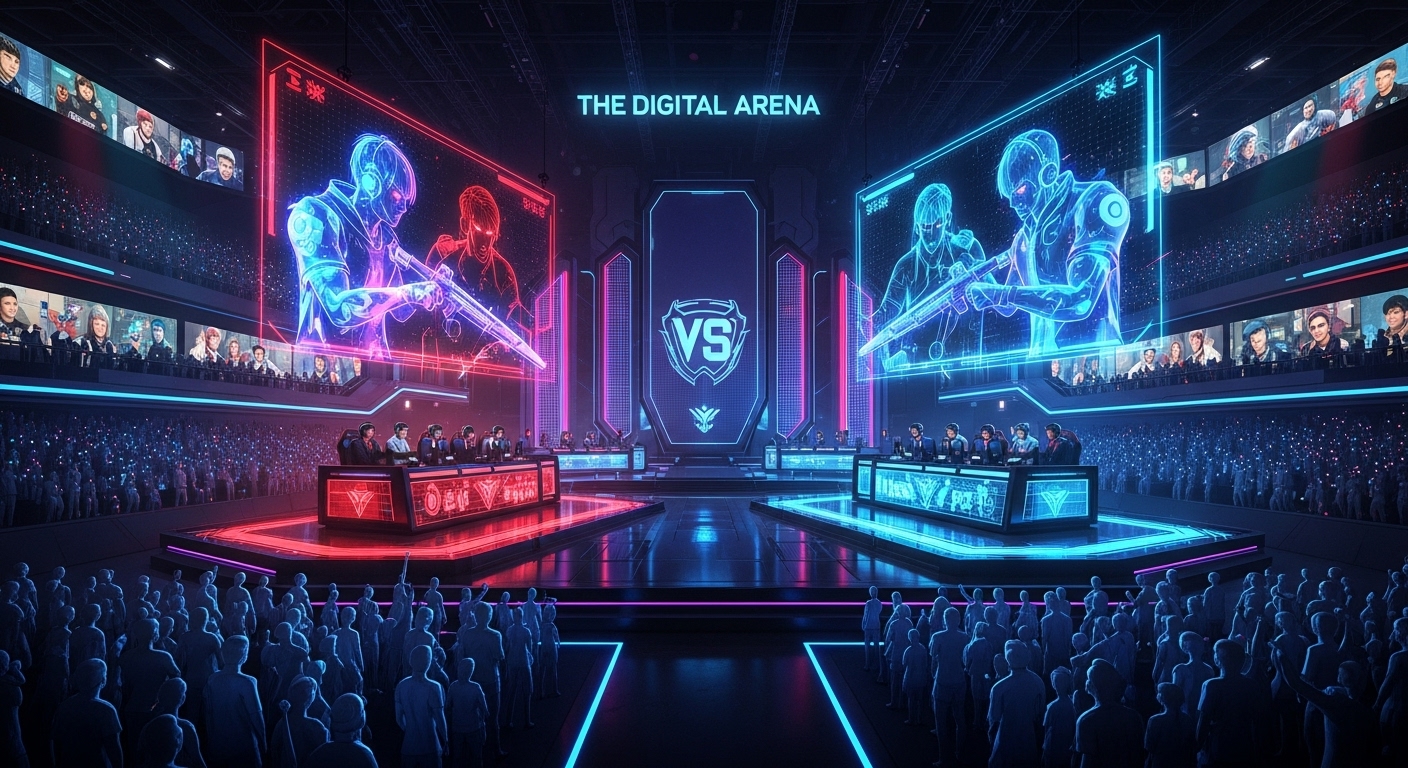Esports, short for electronic sports, has transcended the boundaries of casual gaming and evolved into a multi-billion-dollar global industry. With its rapidly expanding fan base, competitive leagues, and ever-increasing viewership, esports is no longer a niche interest but a mainstream phenomenon. In this blog post, we’ll dive deep into the evolution of esports, its current landscape, and its future potential.
The Birth of Esports: A Digital Revolution
The concept of competitive gaming dates back to the late 1990s and early 2000s when multiplayer games started gaining traction. Games like Quake, StarCraft, and Warcraft gave rise to the first professional tournaments. These competitions were small in scale, often held in local arenas, and attracted a modest audience. However, the seeds for something much larger were planted.
Esports began its rapid ascent in the mid-2000s with the creation of dedicated gaming platforms like MLG (Major League Gaming) and the introduction of streaming services such as Twitch. These platforms made it possible for gamers to compete at a professional level while also enabling fans to watch their favorite players in real-time, further fueling the industry’s growth.
The Rise of Professional Leagues
As esports grew in popularity, so did the establishment of professional leagues. Today, major titles like League of Legends, Dota 2, Fortnite, Overwatch, and Counter-Strike: Global Offensive have developed into multimillion-dollar franchises, with official leagues, sponsors, and broadcasters.
One of the most prominent examples of professional esports leagues is the League of Legends Championship Series (LCS), which regularly attracts millions of viewers worldwide. Similarly, The International, an annual Dota 2 tournament, boasts a prize pool that regularly exceeds $30 million, making it one of the most lucrative events in all of sports.
The Role of Streaming Platforms and Social Media
The rise of platforms like Twitch and YouTube Gaming has revolutionized the way audiences engage with esports. Gamers no longer need to attend live events to witness the action; they can watch matches, interact with streamers, and even participate in live chats from the comfort of their homes.
Social media has played a crucial role in promoting players and teams, building a sense of community among fans. Gamers often use platforms like Twitter, Instagram, and TikTok to share highlights, connect with fans, and announce new ventures. The accessibility of these platforms has allowed esports to cultivate a dedicated and passionate fan base that spans across the globe.
The Intersection of Esports and Traditional Sports
One of the most intriguing aspects of esports is how it is increasingly being viewed alongside traditional sports. Many professional athletes and celebrities have invested in esports teams or even launched their own gaming ventures. Notable figures like Shaquille O’Neal and Michael Jordan have become involved in the industry, bringing a new level of credibility and mainstream attention to competitive gaming.
In fact, many universities now offer scholarships for esports athletes, recognizing it as a legitimate form of athletic competition. Additionally, esports tournaments are being held in massive arenas traditionally reserved for basketball or football, like the Barclays Center in Brooklyn, where League of Legends events have been hosted.
The Economic Impact of Esports
The economic impact of esports is staggering. According to various reports, the esports industry is projected to generate over $1.6 billion in revenue by 2026. This growth can be attributed to multiple factors, including advertising, sponsorships, merchandise sales, and media rights. Major corporations like Coca-Cola, Nike, and Intel are sponsoring esports events, further solidifying its place in the global market.
Moreover, the esports ecosystem extends far beyond just professional players and tournaments. Game developers, coaches, analysts, content creators, event organizers, and broadcasters all play crucial roles in keeping the industry vibrant and profitable.
The Growing Popularity of Mobile Esports
While traditional esports have been heavily centered around PC and console gaming, mobile esports has emerged as a force to be reckoned with in recent years. Games like PUBG Mobile, Free Fire, and Mobile Legends have garnered massive followings, particularly in regions like Southeast Asia, Latin America, and India.
The accessibility and affordability of smartphones have opened up competitive gaming to a broader audience, allowing mobile esports to thrive on a global scale. In fact, mobile esports tournaments are expected to play an even larger role in the industry’s future, with massive prize pools and sponsorships attracting top-tier talent.
The Future of Esports: What’s Next?
As esports continues to grow, the future looks incredibly promising. There are several exciting trends on the horizon:
- Virtual Reality (VR) and Augmented Reality (AR): As VR and AR technology continues to improve, they will likely play a significant role in reshaping the esports experience, creating fully immersive environments for both players and spectators.
- Increased Mainstream Acceptance: Esports is expected to become even more mainstream, with larger collaborations with traditional sports leagues, television networks, and even the Olympics.
- Expanded Player Development: As the competition level increases, there will be a greater emphasis on player development, coaching, and mental health. Just like in traditional sports, esports athletes will need to focus on physical fitness, mental well-being, and skill refinement.
- Diversification of Game Genres: While games like MOBA (Multiplayer Online Battle Arena) and Battle Royale dominate the scene, there’s potential for other genres like racing, sports simulation, and real-time strategy to take center stage in competitive gaming.
- Integration of AI and Data Analytics: Data-driven performance analysis will become even more prevalent, with AI tools helping teams and players optimize their strategies and improve overall performance.
Conclusion: A Digital Revolution That’s Here to Stay
Esports has come a long way from its humble beginnings, and its future looks brighter than ever. Whether you’re a player, a fan, or someone interested in the economic and technological impacts, there’s no denying that esports is more than just a trend. It’s a global movement that is here to stay, evolving rapidly and reshaping the entertainment landscape in ways we could have never imagined just a few decades ago.
As the industry continues to mature, esports will undoubtedly carve out an even bigger place in the world of entertainment, offering new opportunities for players, creators, and fans alike. If you haven’t jumped on the esports bandwagon yet, now is the perfect time to dive in and witness history in the making.



